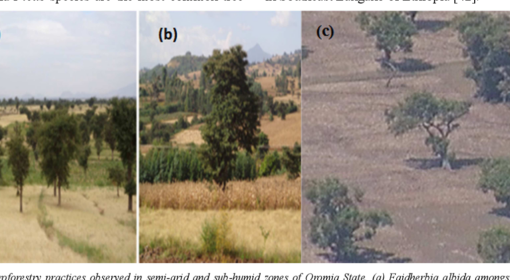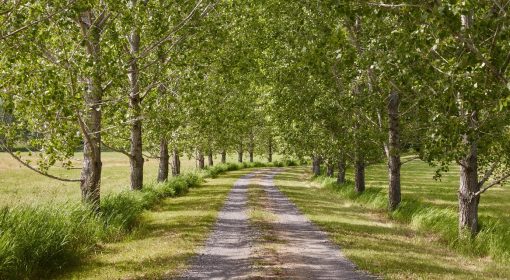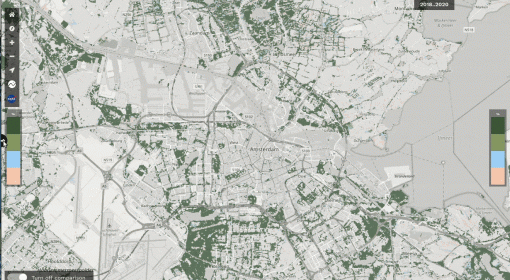By Bantamlak Wondmnow
Agroforestry is a new name for a set of long-standing practices. Farmers in Amhara have immense traditional knowledge and experience in tree management under different agroforestry systems and methods. They tend to deliberately grow trees on the same unit of land as agricultural crops and/or animals, either in some form of a spatial mixture or temporal sequence where there is a significant interaction between the woody and non-woody components of the system, The purpose of implementing agroforestry practices is both ecological, social, and economical.

Agroforestry has recently been recognized as a central practice of climate-smart agriculture as it secures triple wins of productivity, adaptation and mitigation. The main reasons behind practicing agroforestry include higher productivity, better microclimates through shading and shelter, production of timber, fodder, and other products, improved soil quality, and conservation of biodiversity. These benefits highlight the need to widely scale agroforestry practices. In the Gubalafto region of Amhara, agroforestry extension has become compulsory for the following reasons:
- Population increase, land scarcity and the need to attain productivity per unit of land, labor and water.
- Tree cover loss negatively impacts crop yields and livestock productivity due to poor soil fertility, soil erosion, drought, flood or wind damage.
- Conservation and sustainable management of natural forests and communal plantations in the upper catchment would be attained with reduced pressure due to agroforestry in other land uses.
- The increasing demand for wood and wood products (specifically the cost and shortage of firewood and building timber) can’t be satisfied from the only existing plantations and remnant forests.
- Stronger winds, more prolonged droughts, higher temperatures, decreased seasonal water flow and well recharge increased because of tree loss and have made environments less habitable.
- Conflicts over scarce natural resources.
Traditional agroforestry practices come from dispersed trees in croplands, which have widely been observed in most parts of the Amhara region. The core of this practice is (1) protection and management of selected matured trees that are already on a site; the most common tree species conserved in Amhara are Acacia Seyal (Wachu), Acacia polyacantha (Gmarda), Croton Macrostachyus, and Cordia africana. These majorly multipurpose tree species are consciously and deliberately retained and taken care of by the farmers due to their many benefits. (2) Careful management of seedlings established on-site through natural regeneration. (3) Planting new tree seedlings. Farmers select new trees and shrubs based on their adaptability to the specific environment, the ability to withstand adverse conditions, the growth rate (especially for branching and the root system), and the ability to cycle nutrients.

Furthermore, shrub and tree species are often used as biological soil and water conservation structures, such as soil bunds, trenches, and check dams. They can increase the stability and resistance against rain, splash effects, runoff, etc. planting suitable plant species on the structures stabilizes them with their root system and the biomass and/or canopy above the ground protects the structures from erosive raindrops. More importantly, the stabilization of the structures makes the surface area occupied by the structures productive. Stabilized areas are an additional source of timber, fuel wood, fiber, food and forage, palatable grasses and legumes, fruits and other products. Trees or shrubs help to demarcate farm and homestead boundaries, thus providing users with an additional sense of ownership. Achieving proper and productive stabilization will encourage farmers to protect conserved areas and appreciate its effects.


To make agroforestry extension an integral part of the region’s natural resources conservation and management agenda, technical training and awareness creation on the design and implementations of selected agroforestry practices have been given annually for Natural Resource Management practitioners at all levels of the Amhara Bureau of Agriculture.
Ways forward in sustainably scaling the agroforestry systems in Amhara requires awareness creation on farmer-managed natural regeneration, including designing agroforestry practices, species selection, tree management and benefits. In this, women are particularly crucial as they are responsible for collecting fuel wood. Furthermore, institutionalized Watershed Users’ Cooperatives strengthen mutually agreed by-laws among members of the watersheds for the management of trees. With adequate follow-up, support and encouragement from the Amhara Bureau of Agriculture, peer-to-peer horizontal learning and sharing of experiences among farmers the uptake of these highly needed and essential farming systems is improved.
Supported by:




